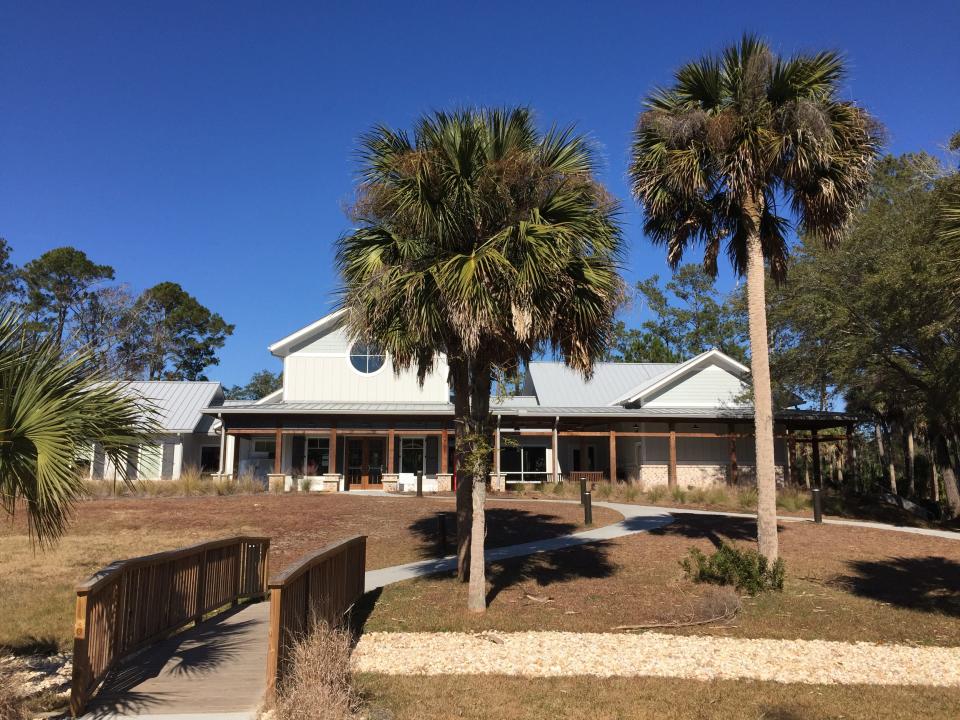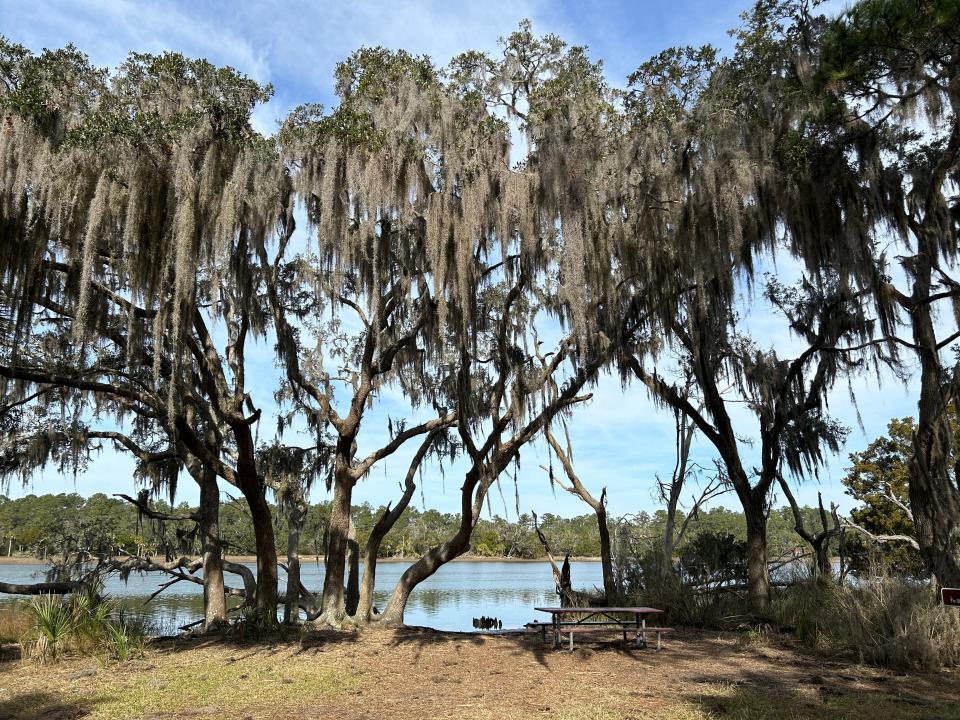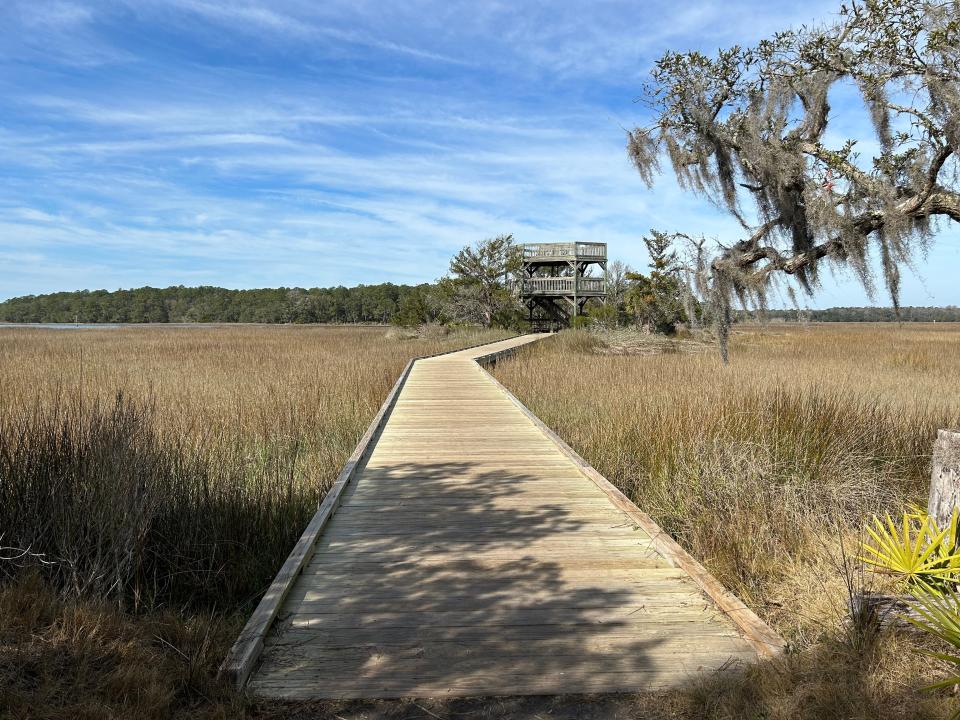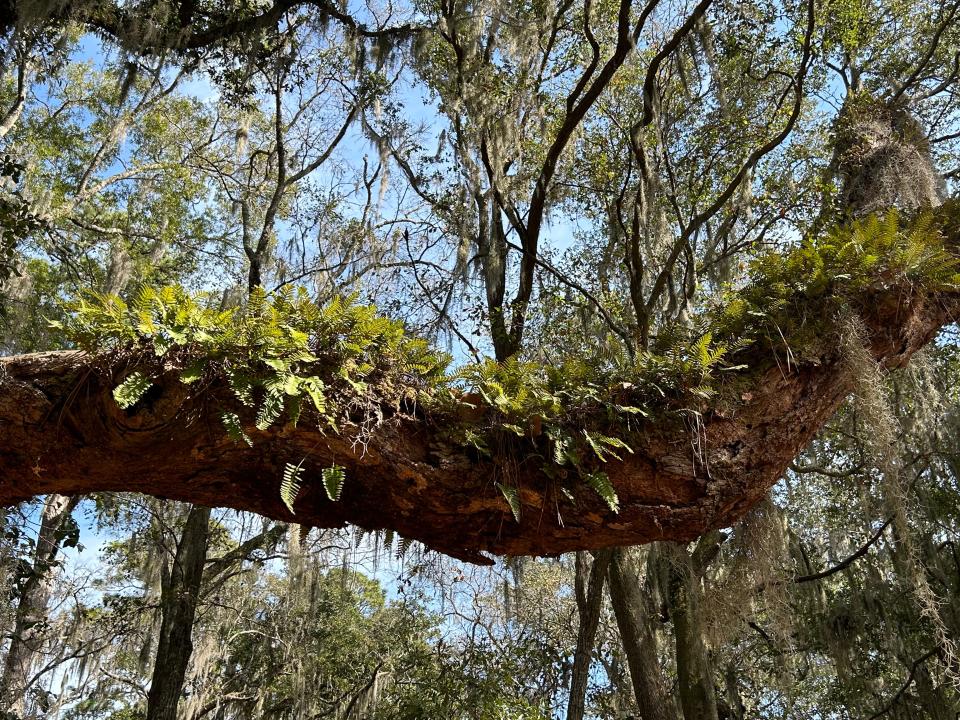One tank trip: You may not know everything about Skidaway Island State Park
Ready for an easy-to-get-to, super affordable adventure practically in your own backyard? An excursion that’s dog friendly, safe and great for kids? Skidaway Island State Park is a perfect one-day family get away and an ideal destination for squeezing in some solo nature time within your day.
I know, long-time locals may be rolling their eyes because everyone knows about Skidaway Island State Park, right? Not necessarily. And here’s how I know not everyone knows. When I’m not writing and adventuring, I’m a musician performing downtown. As demographics shift, I’m increasingly meeting people who’ve recently moved here and ask what I enjoy doing in Savannah. And I’m surprised by how few are familiar with the park.
So, grab your binoculars — water bottle, too — and put on your walking shoes because we’re going to get reacquainted with a nearby natural treasure that’s been in our backyard since 1975.
One tank trip: Reflect on the history while taking in Harris Neck National Wildlife Refuge
Other one tank trips: By ferry or horse, Daufuskie and Hilton Head Island are ample lands to explore
More from Josephine Johnson: Enjoy nature and history together with a camping trip to Jekyll Island
When I visit Skidaway I have a routine — park at the visitor’s center and check in with the rangers to see what kinds of birds and wildlife they’ve seen on the trails. Interpretive ranger, Molly Canady, is my go to. An all-round naturalist with a fondness for birds, she always has an eye on the feeders around the center as indication of what species are likely in the park.

“Right now I’m seeing a lot of yellow-rumped warblers, nuthatches and bluebirds,” confirmed Canady. “The yellow-rumped warblers are interesting because they’re only here during winter eating the wax myrtle berries. In a few weeks they’ll head back north to their breeding grounds. Here’s a fun fact: yellow-rumped warblers are the only warbler able to digest the wax around the myrtle berries.”
And with that, I head out the back doors of the park’s new 6,200 sq. ft. facility, a much-needed renovation that was a long time coming. Completed in late 2021, the space is well lit from panels of large windows that provide great observation of the center’s array of bird feeders. It has a spacious gift shop, event area and new reptile displays.
One tank trip: Put 'sibling rivalries' to bed — there's a variety of fun to have in Charleston
I start out on the Sandpiper Trail then hook into the Avian Loop. The terrain is flat and easy to walk — portions of these trails together are about a mile — and go through salt flats, tidal creeks and maritime forest. Because the sky is so open here, it’s usually on this section where I see osprey and occasionally a pair of bald eagles.
Where the Avian Loop meets the Skidaway Narrows, there’s a terrific cluster of live oaks and a picnic table by the water’s edge. At low tide this spot is ideal for spotting fiddler crabs and shore birds like egrets, herons and ibises.

The Connector Trail links the Avian Loop to the Big Ferry Trail a mile away on the other side of the park. This trail section is mostly dense Chinese Tallow, an invasive that has run rough shod in this part of the park. It’s a fast-growing tree that will completely change an ecosystem. Because it grows quickly and densely, this species alters light availability, choking out native plants and destroying food sources for animals. Park officials and rangers are working diligently to eradicate this invasive completely from the park.
At the junction of the Big Ferry Trail, I turn left and head towards the observation tower. I’ve always wondered about this wooden structure because it seems strangely disconnected from the natural landscape it’s built on.
One tank trip: St. Phillips Island is a natural refuge less than a tank of gas away
I asked Molly if it were once something else, or if it has always been just an observation platform.

“It’s always been for observing,” intoned Canady. “The tower gives a different perspective of the landscape, so visitors can see the topography. An added 25-feet of elevation helps people understand how big the marsh is.”
My favorite part of the Big Ferry Trail is the shell midden where a cluster of cedar trees now grows. These middens fascinate me because they offer a glimpse into the lives of indigenous people who lived here as much as 4,000 years ago. In the Southeast U.S., archeologists are fairly certain people lived here year round and migrated very little because the food sources were of such high quality. Researchers also assert these shell remains served as places integral to daily life as well as sacred ceremony.
I make my way around the Earthworks loop then head back to complete the three-mile Big Ferry Loop. By the time I return to the visitor’s center, I’ve been on the trails about three hours and have walked just shy of six miles. And during that time, encountered fewer than 10 people.

Molly greets me at the center and reminds me that the park offers lots of things to do for kids, families, seniors and people like me.
“You know, we have a variety of programs every month,” she said with a gleam in her eye. “We offer guided hikes, bird and nature walks, archery workshops, crafts and special community events throughout the year.”
It only costs $5 per car per day or $50 for an annual pass to visit Skidaway Island State Park. To learn more about their monthly programming, check out their website: https://gastateparks.smugmug.com/Skidaway-Island-State-Park/
This article originally appeared on Savannah Morning News: Savannah GA travel: Hike at Skidaway Island State Park to see wildlife

